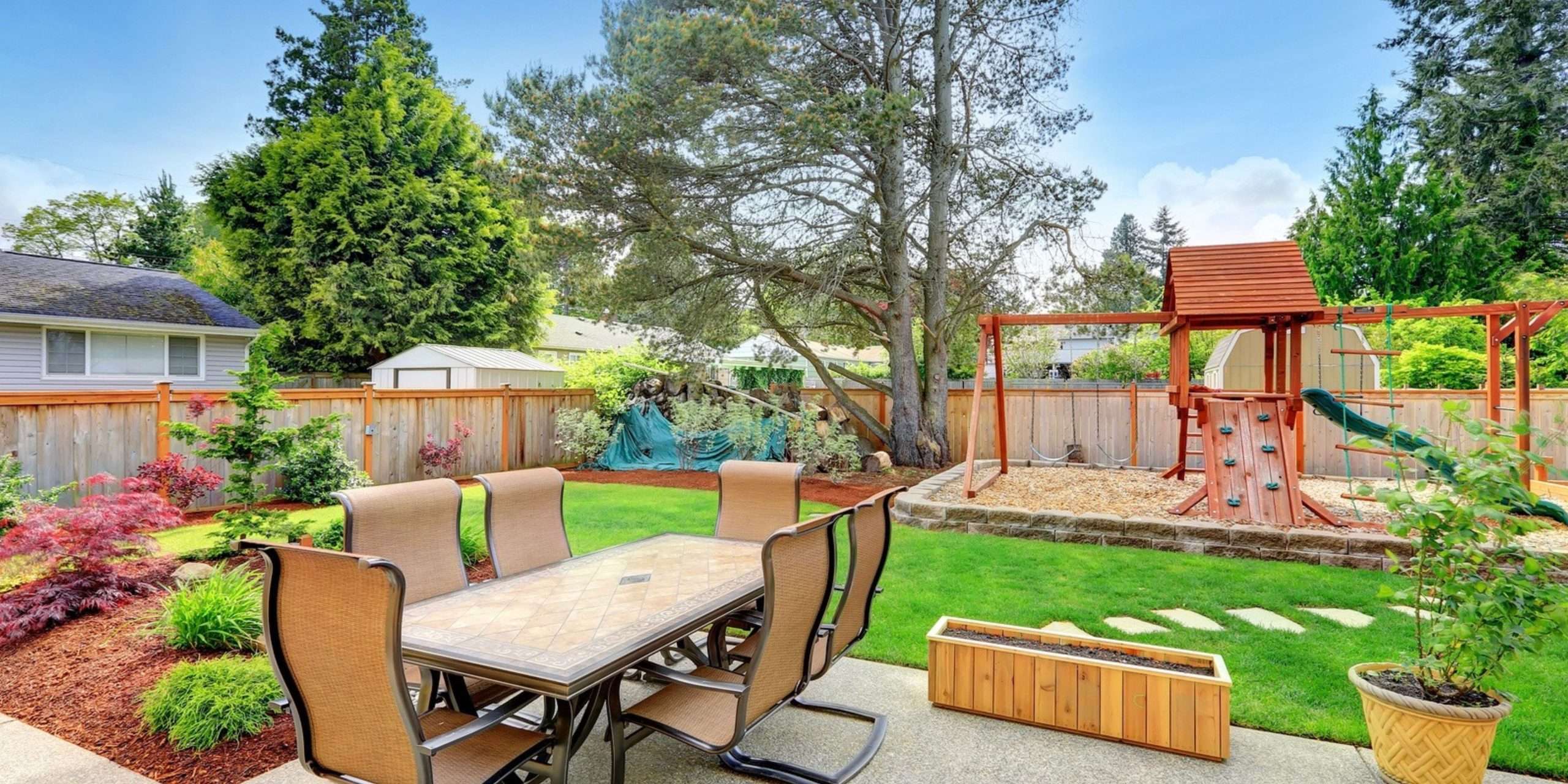Having a dedicated play area in your yard is a fantastic way to encourage outdoor play and provide endless hours of entertainment for children. Whether you have little ones of your own or frequently host gatherings with family and friends, creating a fun and safe play space is essential. In this blog post, we will explore ideas and considerations for incorporating a play area in your yard, ensuring that it becomes a favorite destination for kids of all ages.
Assess Your Space and Safety
Before designing your play area, assess your yard to determine the available space and any potential safety concerns. Consider the age range of the children who will use the area and plan accordingly. Ensure that the play area is visible from your home to supervise children easily. Identify any potential hazards such as uneven ground, sharp objects, or nearby water features, and take steps to address them. It’s important to prioritize safety to create a worry-free environment for children to play.

Choose Appropriate Play Equipment
Selecting the right play equipment is crucial to creating an engaging play area. Consider the interests and ages of the children who will be using the space. Options can include swings, slides, climbing structures, playhouses, and sandboxes. Opt for equipment that meets safety standards, is durable, and can withstand various weather conditions. Ensure that there is enough space around each piece of equipment for children to move safely and comfortably.

Include Natural Elements
Incorporating natural elements into your play area adds sensory stimulation and enhances the overall experience. Consider integrating features like stepping stones, logs for balancing, or a mini-garden where children can plant and nurture their own plants. Incorporating natural elements not only encourages imaginative play but also provides opportunities for learning about the environment and fostering a connection with nature.

Provide Shade and Seating
Make sure your play area offers shade to protect children from the sun’s harmful rays during hot summer months. Install a shade sail, canopy, or strategically position the play equipment under a tree. Additionally, provide seating areas for parents and caregivers to comfortably supervise while children play. Benches, picnic tables, or outdoor seating options allow for relaxation and socializing while keeping an eye on the little ones.

Encourage Creativity and Imagination
A well-designed play area should stimulate creativity and imagination. Include elements like chalkboards, art panels, or a designated area for outdoor art activities. Incorporate containers or shelves for storing outdoor toys, art supplies, and games. Consider adding a music station with musical instruments or a play kitchen for imaginative role-play. Providing opportunities for creative play fosters cognitive development, social interaction, and a sense of adventure.

Safety Surfacing
Choose appropriate safety surfacing to minimize the risk of injuries from falls. Options such as rubber mulch, wood chips, or synthetic grass provide cushioning and help absorb impact. Ensure that the safety surfacing extends a sufficient distance around the play equipment, considering the height of the structures, to create a safe zone for children to play.

Incorporating a play area in your yard creates a vibrant and joyful space for children to explore, learn, and have fun. By assessing the space, selecting appropriate play equipment, including natural elements, providing shade and seating, encouraging creativity, and ensuring safety, you can design a play area that captivates and engages children of all ages. Creating a dedicated play area in your yard not only promotes active and imaginative play but also encourages children to spend more time outdoors, fostering their physical and mental well-being.


